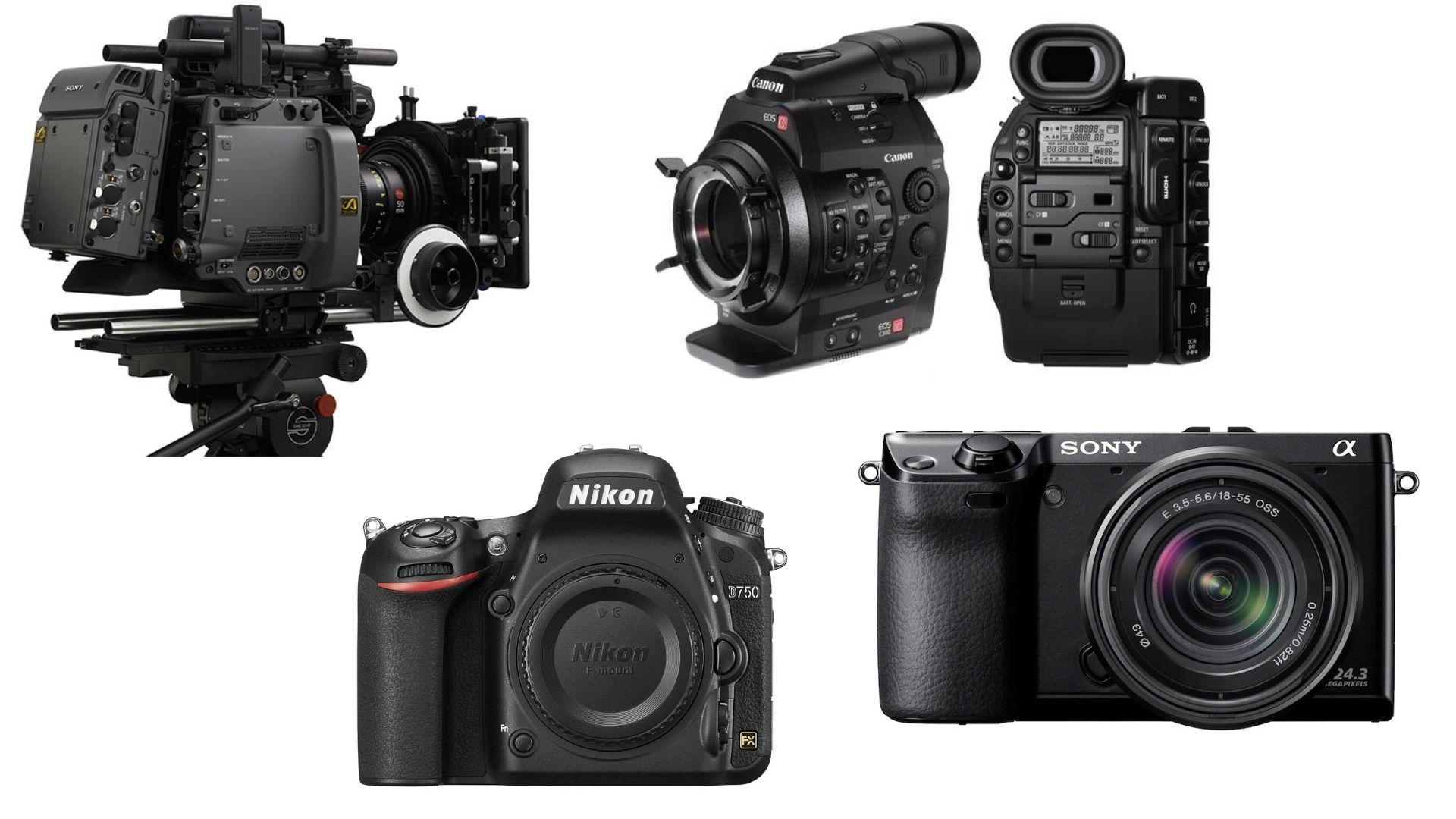The technical science of cinema camera vs DSLR vs mirrorless for every professional, amateur, or beginner content creator is a must knowledge. A film or photography enthusiast should be able to make a key difference between cinema cameras, DSLRs, and mirrorless. Therefore, this article will help you to be proficient and master this skill related to film production and photography.
What is a cinema camera?
A cinema camera is a type of photographic camera that quickly takes a series of images, either on an image sensor or on film stock. Then it creates a moving image that may be projected onto a movie screen. A cinema camera is also known as a film camera or movie camera.
Cinema cameras have a big sensor and offer many of the benefits of both professional camcorders and system still cameras. Image quality is excellent thanks to the large sensors and interchangeable lenses.
Most professional cinema cameras also have a superior sound adoption mechanism, handle better than DSLRs, and record in formats that can be edited more easily ‘in post’ (during the editing stage) than basic DSLR footage. And they don’t suffer the ‘moiré’ effect which arises from shooting video with a sensor meant for high-definition still photos.
Other than cinema cameras, camcorders are also used for recording videos.
Different cinema cameras can shoot in different fps( frame per second ) for different shooting conditions.
Read Also: Sony FX6 Cinema camera

What is a DSLR camera?
A Digital SLR camera is referred to as a DSLR. The acronym SLR stands for single-lens reflex which means that light is reflected from the lens onto a flat ground-glass screen via a reflex mirror. DSLR cameras have a system of interchangeable lenses and also a digital display.
After only a few years of technological improvements, the first DSLR camera was produced in 1999. With a vast number of options on the market, the DSLR provides a wide range of options for taking professional camera-quality photographs.
DSLR cameras are available in 2 different formats that depend on the type of sensor they have. These two formats are FX and DX.
Nikon D6 DSLR can shoot continuously up to 14fps, continuous low from 1 to 10 fps, continuous high from 10 to 14 fps and quiet from 1 to 5 fps.
Read Also: DX Format Nikon D7500
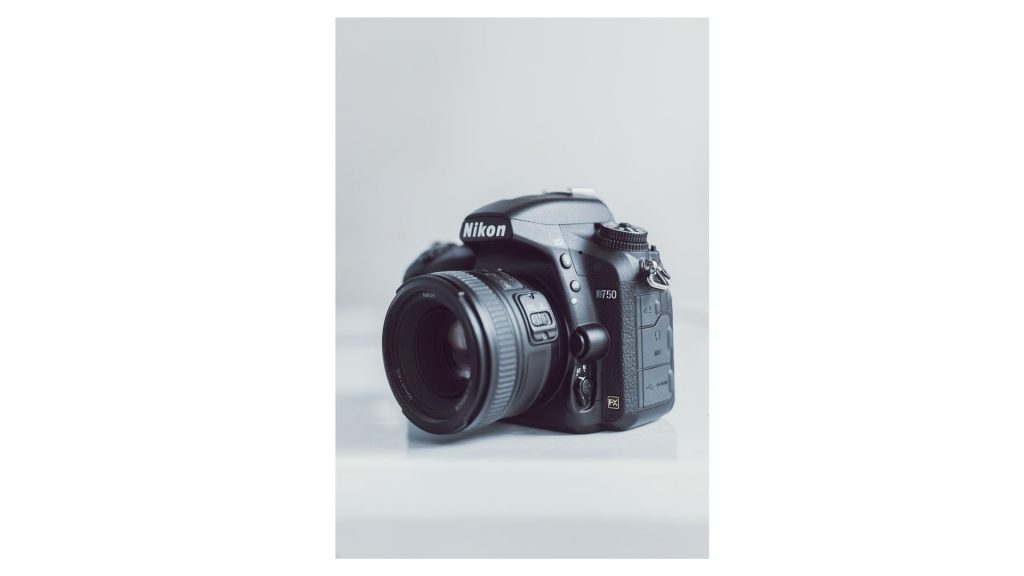
What is a mirrorless camera?
The term “mirrorless camera” refers to a compact camera system that does not have a reflex mirror. Light flows directly through the lens to the digital sensor, which then displays your image on the camera’s LCD screen. This allows you to fine-tune settings and preview your shot before taking it. A mirrorless camera features a system of interchangeable lenses.
The mirrorless camera’s primary selling feature is that it is lighter and more compact than DSLR cameras due to the lack of a mirror system.
Full-frame, APS-C, Micro Four Thirds, and 1-inch imaging sensors are available in mirrorless cameras.
The Mirrorless camera Canon R5 does continuous shooting at up to 12fps( frames per second) with the mechanical shutter and up to 20fps ( frames per second ) with the electronic (silent) shutter.
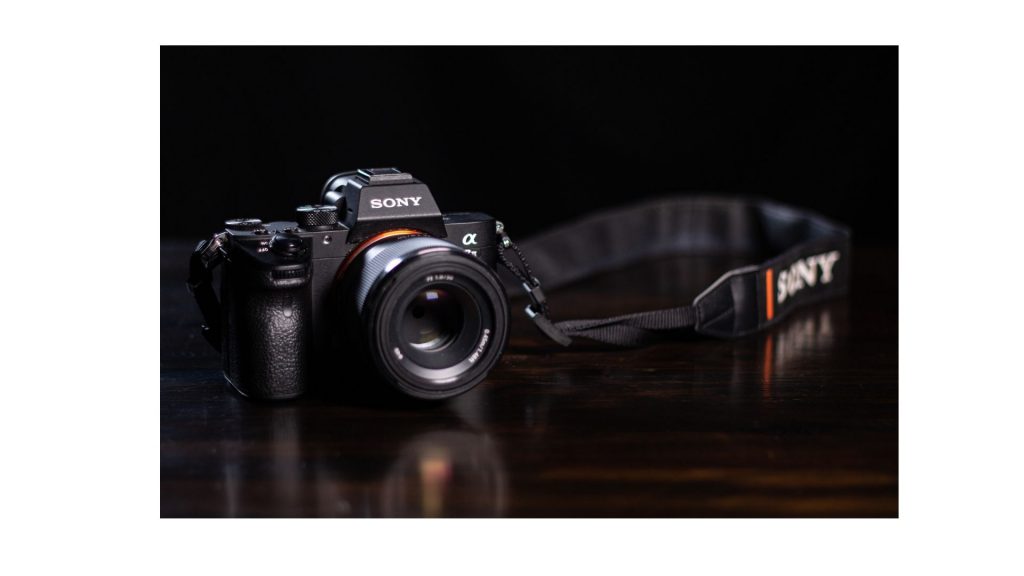
What’s the difference?
| Cinema Camera | DSLR | Mirrorless |
|---|---|---|
| A cinema camera features a system of interchangeable lenses and better video shooting results than a DSLR or mirrorless camera. Furthermore, the processing of video through the editing phase does not make lose its original quality and colors. Meanwhile, a DSLR or mirrorless camera’s video loses its originality during the editing phase. The sensors used in the cinema camera are referred to as full frames as they have a size of 35mm. But they have a 1.5x crop factor in still photography when compared to DSLR or mirrorless. | A DSLR ( Digital SLR ) is mainly designed and used for still shots. It uses lenses that are interchangeable according to the needs. When you take a photo, a mirror reflects the image up to the viewfinder and flips up, blacking out the eyepiece. As a result, when shooting video with it, you must use the main screen’s ‘Live View’ feature instead. The latest DSLR cameras offer high-quality video but they are usually more expensive than normal range DSLR cameras. | A mirrorless camera is also mainly designed and used for still shots. It is similar to an SLR in that it allows you to swap lenses, but it lacks a mirror. The image is displayed on the primary live view screen or an electronic eye-level viewfinder if one is available. They’re usually more compact and lighter than DSLR cameras. Mirrorless cameras can provide a video quality better or close to that of DSLR cameras. |
13 Key differences between cinema cameras, DSLRs, and mirrorless cameras
These are the key differences between professional cinema cameras, DSLRs, and Mirrorless cameras.
- RAW data handling
- Dynamic Range
- Sensor Size
- Global shutter vs Rolling shutter
- ISO sensitivity
- Moire effects
- Lens mount
- Depth of field
- Codec and bit rate
- Color bit depth
- Ergonomics
- Size and weight
- Cost
All these differences are important to understand if you want to have depth knowledge of cinema camera vs DSLR vs mirrorless.
Raw Data Handling
A camera raw data file is a file that contains uncompressed or unprocessed data from a digital camera’s image sensor, a motion picture film scanner, or another image scanner.
Working with uncompressed data has the major advantage of providing more bandwidth for image processing, which is critical throughout the color grading post-production process. When color manipulation is applied to compressed photos, the images are more likely to degrade.
Does DSLR / mirrorless camera offer RAW shooting for videos?
NO, DSLR / mirrorless cameras do not offer RAW format shooting for videos.
A DSLR will compress an image using a video codec like H.264, which is ready for transmission. However, as a filmmaker, you will not be able to make the necessary adjustments that are available in RAW format.
Does DSLR / mirrorless camera offer RAW shooting for images?
Yes, DSLR / mirrorless cameras offer raw format shooting for images.
A DSLR can handle RAW data output for still photography, which allows the photographer to capture the entire range of scene brightness captured during the shoot.
Does cinema camera offer RAW shooting for videos?
Yes, cinema cameras offer RAW format shooting for videos. Cinema cameras allow you to record RAW footage at a full-frame rate, allowing for multiresolution and further processing to be done later.
Even if an Arri Alexa encodes to a video format, it will do so at a very high bit rate. This requires the usage of an SSD card rather than an SD memory card to allow uncompressed recording.
Read Also: Rangefinder vs DSLR
Dynamic Range
The dynamic range is an important aspect to consider when determining which camera is most suited to your filmmaking demands. Simply put, this is the measurement of image data captured at different light intensities.
Stops or exposure values, sometimes known as Evs, are commonly used to describe the range at which significant imagery can be captured.\
The higher a camera’s dynamic range, the better it’s capacity to retain more visual video in low-light or extreme-light situations.
Most DSLRs have an 11-stop maximum dynamic range.
Cinema cameras like the Arri Alexa have a 15-stop dynamic range.
Because you’ll have more visual information with a wider range, you’ll have greater latitude in post-production.
When it comes to dynamic range, a cinema camera can also be named a professional movie camera.
Sensor Size
The image sensor is the digital camera’s intelligence. Many individuals will tell you that bigger is better when it comes to sensor size. They are correct in many ways, although size isn’t everything.
The “standard” in still photography is referred to as “full-frame,” which is roughly the same size as an image shot on 35mm film; anything less than that is sometimes referred to as having a “crop factor”.
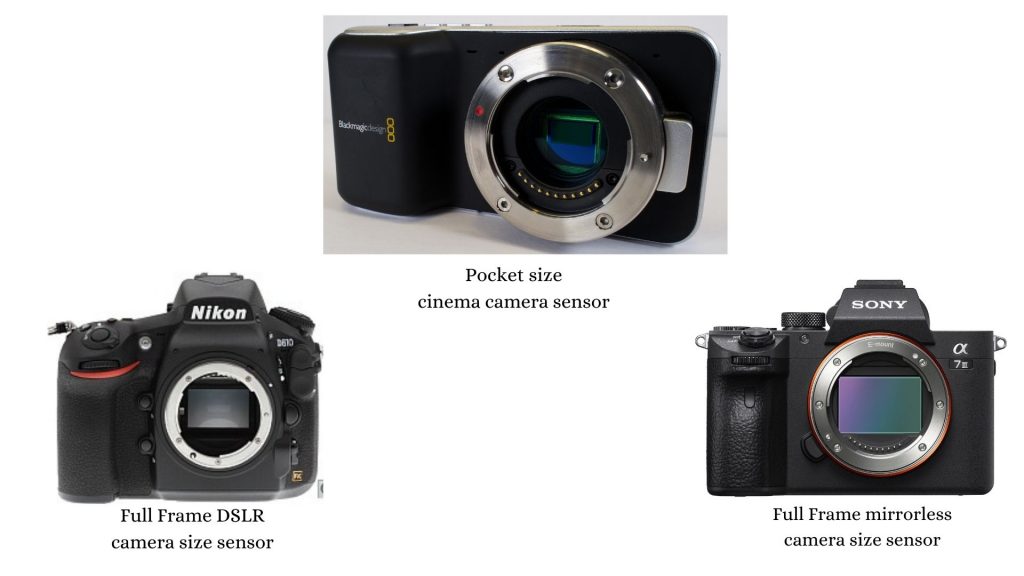
What is the sensor size of cinema cameras?
Since the mid-1990s, Super 35mm has been recognized as the standard film/sensor format for cinema cameras. Super 35mm is considered “full-frame” by video enthusiasts, yet it has a 1.5x crop ratio when compared to “full-frame” in still photography.
What is the sensor size of DSLR / mirrorless cameras?
A DSLR camera can either have a 24x36mm sensor that is regarded as full-frame, or a DSLR might have a 24x16mm sensor that is regarded as a crop sensor / APS-C. Meanwhile, Full-frame, APS-C, Micro Four Thirds, and 1-inch imaging sensors are available in mirrorless cameras.
Is a cinema camera or DSLR / mirrorless camera better in low light conditions for video?
In cases when you have little control over the lighting, such as outdoor dark or light locations, a cine camera will come in handy. A better result is generated by cinema cameras under these conditions.
Cinema cameras have better performance for video shooting than their competitive partners.
This factor gives a high win to cinema camera in cinema camera vs DSLR vs mirrorless for video shooting.
Global Shutter vs Rolling Shutter
When comparing the shutter technology available on DSLRs and cinema cameras, you’ll notice a significant difference. The mechanical procedures involved in the application of celluloid material are becoming more advanced as digital videography technology progresses.
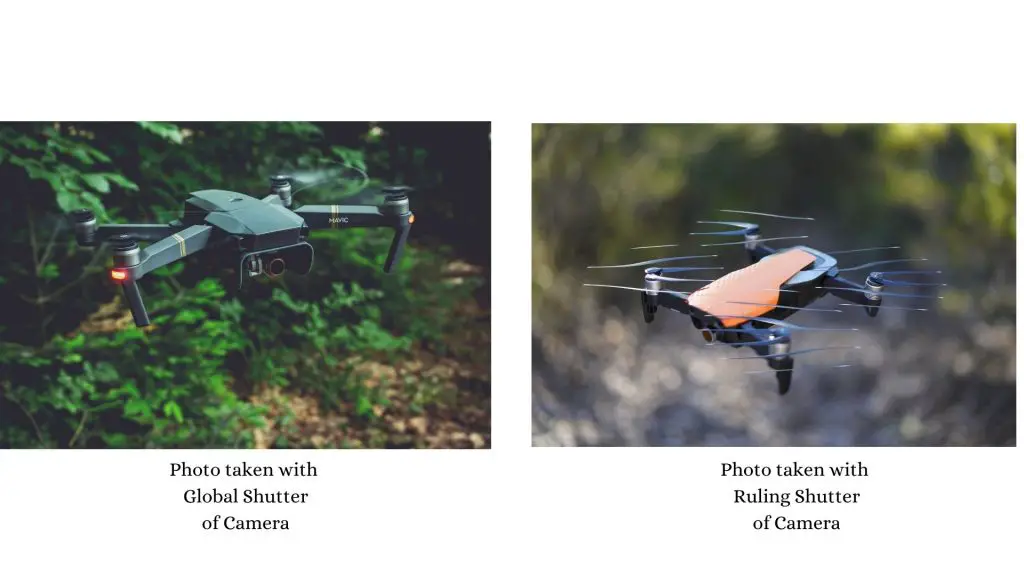
What is a global shutter?
Global Shutter mode, sometimes known as a ‘Snapshot’ exposure mode, means that all pixels in the array are exposed at the same time. Thus, allows for ‘frozen frame’ capture of fast-moving or changing events. This can be regarded as operating similarly to an interline CCD sensor in this regard.
What is a rolling shutter?
In cameras, a rolling shutter records the frame line by line on an image sensor rather than capturing the complete frame at once. Because the rolling shutter sensor examines the image from top to bottom, the top of the frame is recorded slightly before the bottom.
Do DSLR / mirrorless cameras use global shutter or rolling shutter?
DSLRs use an electronic shutter that uses a scanning method, also known as a rolling shutter. The image is continually scanned from the top to the bottom of the sensor in this procedure. Due to the reduced downtime required to capture light, this method is effective in increasing sensor sensitivity.
Do cinema cameras use global shutter or rolling shutter?
Several cinema cameras, such as the Arri Alexa, use global shutter technology rather than the rolling shutter. The jello effect, which is common in moving objects or handheld cameras, is less likely with this technology.
The biggest disadvantage of adopting rolling shutter technology is that it has a higher risk of causing undesirable distortion in an image. Such disturbing photos can emerge when the subject moves quickly, the camera moves quickly, or when light flashes quickly.
ISO Sensitivity
ISO readings are provided by electronic sensors in digital cameras, which express their varying light sensitivity. With a difference of one EV of light between the readings, the least measurement is normally at ISO 100.
A camera’s sensitivity to light is poor at ISO 100, but the image quality is excellent. To obtain well-exposed photos when shooting with such a low ISO, you’ll need additional light. To achieve a well-exposed photograph at ISO 6400, a very small quantity of light is required, yet the resulting image will be of low quality due to visual noise.
ISO sensitivity is the primary factor to be considered for cinema camera vs DSLR vs mirrorless.
Which one is better between Cinema, DSLR, and mirrorless camera in terms of ISO sensitivity for videos?
When it comes to ISO performance, cine cameras have an advantage over DSLRs. This means that working with cine cameras produces less visual noise and higher image quality at high ISO levels than working with DSLRs.
At ISO 6400, the performance of the two types of cameras is frequently a deciding factor in which camera works best. It’s worth noting that while capturing video at ISO 6400 on a cine camera is a terrific option, it’s not the best setting for a DSLR.
Read Also: FX Lenses vs DX Lenses
Moire effects
Content creation in different fields demands the diversity of a camera. Before going to this effect for cinema camera or DSLR / Mirrorless camera, let’s see what is this.
What is the Moire effect?
Moiré appears in photographs when a scene, an object, or fabric contains repeated elements (dots, lines, checks, stripes) that are larger than the sensor resolution. The camera creates a bizarre wavy pattern that is obtrusive and not appropriate for a corporate headshot.
The following photo shows moire effect when the sunlight was being captured through the kitchen net curtain.
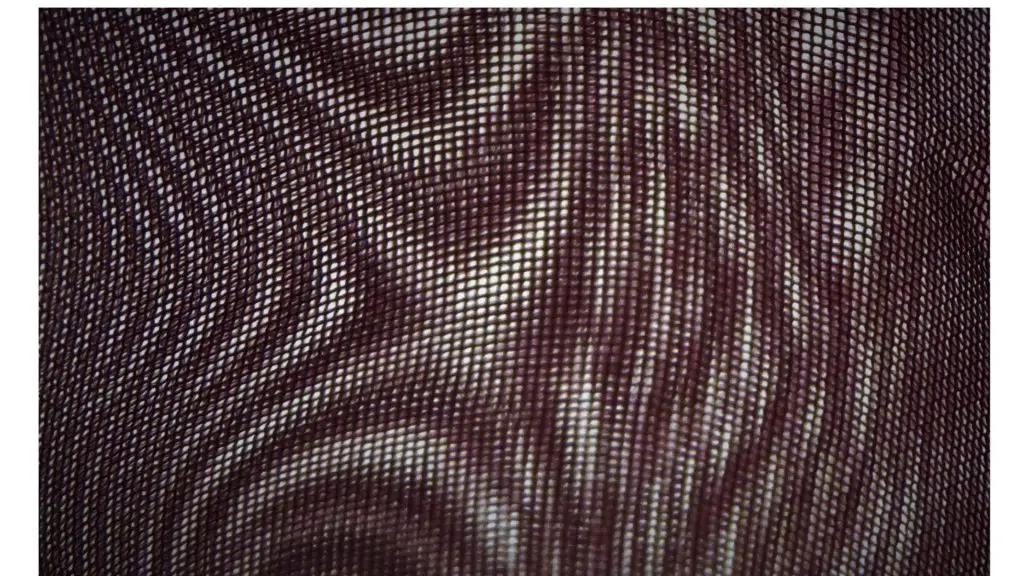
Moire effect in Cinema cameras
The functionality and distribution of photosites (pixels) distinguish a cinema camera from a DSLR, despite the fact that they typically have identical-sized sensors. As most pixels on a cinema camera are designed for video, the moire effect is less likely.
Moire effect in DSLR / Mirrorless cameras
Moire effect more likely happens in DSLR / mirrorless cameras compared to mirrorless cameras. When shooting a film with a DSLR, the allocation of photosites is frequently dispersed over a vast area of redundant photosites, resulting in a moire effect. When recording little gids or complicated picture patterns, this is frequently the case.
Lens Mount
Lens selection is one of the most important components of cinematography, so it should be one of the first things you think about when choosing a camera. Native DSLR mounts, such as Canon EF and Nikon F; mirrorless camera mounts, such as Micro Four Thirds or Sony E; and the PL mount found on high-end movie cameras are among the standard lens mounts.
Some mounts are better than others when it comes to adaptability. Mirrorless camera mounts, for example, have a small flange focal distance, making them easily adaptable to various mount types using commonly available adapter rings. This gives you the flexibility and freedom to choose lenses based on your budget and desired style from a seemingly endless assortment of vintage and modern lenses.
While mirrorless camera mounts are more versatile, that doesn’t imply DSLR mounts should be avoided.
For DSLR systems, many cine-style lenses are now available. In addition to PL, Zeiss CP.3 Compact Primes are available in Canon EF, Nikon F, Sony E, and MFT mounts. DSLR systems also feature a large number of native lenses, though these aren’t necessarily the greatest choice for cinema use due to the lack of manual aperture rings and electronic or focus-by-wire focusing systems, which make pulling focus difficult and smooth iris pulls impossible.
Depth of field
For content creation whether in video production or photography, depth of field is a major factor to be considered.
What is the depth of field?
Depth of field is the distance between the closest and farthest objects in an image that are in acceptable fine focus for many cameras. The depth of field can be computed using the focal length, subject distance, permissible circle of confusion size, and aperture.

For many users, the ability to produce a deeper depth of field is a major advantage of a larger sensor.
A shot taken with a lens at f/2.8 on a full-frame camera will appear shallower than a shot taken on a Super 35 sensor with the same lens, framing, and aperture. A shallow depth of field allows you to differentiate your subject from the background, which is essential for generating a dramatic image.
Isn’t it then true that bigger is better? Not always, to be sure. Super 35, Micro Four Thirds, and even Super 16 formats may still produce a cinematic shallow depth of focus.
Also, even for an experienced focus puller, the deeper the depth of field, the more difficult it is to keep a subject in focus during the shoot. On full-frame, a workable depth of field may require stopping down to f/4 or even f/5.6 and sacrificing a few stops of light, whereas a Super 35 camera may be adequate at f/2.8.
Depth of field in the compassion of cinema camera vs DSLR vs mirrorless can only be decided by the user according to the needs.
Read Also: How to safely format SD card?
Codec and bit rate
Internally, video taken by cameras is stored on media cards using several codecs.
A codec is a program that compresses digital data to save storage space and make it easier to playback.
AVCHD, for example, is a highly compressed codec with low bit rates (or data rates), but Panasonic’s AVC-Intra and Sony’s XAVC are more robust, and less lossy codecs. The higher the bit rate, the more information is recorded, and the image quality generally improves.
Higher bit rates mean larger file sizes and more computer resources required to playback and edit the video.
Interframe and intraframe video compression are the two basic types of video compression to consider.
Interframe, also known as long GOP (group of pictures), is a collection of grouped frames, or “keyframes,” that reference one another to create an image, resulting in decreased file sizes.
Intraframe compression allows each frame to stand alone and include all of its data. Intraframe files are larger, but they need less processing power to play back and modify because the computer doesn’t have to look at a bunch of photographs at once to display a single frame. Intraframe codecs are typically employed for higher bit-rate recording and, if available, are generally favored for video origination.
Apple ProRes, Avid DNxHD, and Cineform are all intraframe intermediate and editing codecs.
Colour Bit Depth
When it comes to making filming images, the camera’s ability to reproduce colors with smooth gradation is crucial. The color depth, or bit depth, of a camera, determines the number of potential colors it can record.
Each color channel in an 8-bit video clip has 8 bits of data, resulting in 256 shades of red, green, and blue, for a total of 16.7 million potential colors. This may seem like a lot, yet it still results in color banding in areas with tone gradation. However, because most consumer monitors and HDTVs are 8-bit, you can typically get away with 8-bit cameras.
Although 8-bit is excellent for many purposes, if you’re going to be performing a lot of color grading or compositing, you’ll want a camera that records in 10-bit, which gives you 1,024 shades of red, green, and blue for a total of 1.07 billion colors.
Naturally, your file sizes will be considerably greater than with 8-bit, but you’ll have a lot more color data to work with. In addition to 10-bit codecs, 12-bit, 14-bit, and 16-bit raw formats are available in select high-end models.
Ergonomics
Ergonomics matters a lot for the people in this industry for production purposes.
What is ergonomics for cameras?
The number and complexity of actions necessary to operate a camera are the basis of camera ergonomics. It includes the handy feature, controlling complexity, interface, weight, and all other features affecting the performance of a camera.
Because a cinema camera is intended specifically for recording moving images, it has a plethora of access buttons and connection connectors. It also features an integrated cooling mechanism to avoid overheating caused by the vigorous filmmaking process. These cameras are handy as well but most of them are heavy, so stabilizing gears are recommended for cinema cameras.
So, the cine cameras are also known by the name Run and gun cinema cameras.
DSLRs are capable of capturing video in most situations, although they are more sensitive when exposed to severe temperatures. DSLR / mirrorless cameras do not have a handle to be controlled, stabilization gears are required for this purpose.
Size and weight
Professional Cinema cameras are larger than the counter cameras of their competition. These cameras are heavy as well. They take a lot of space to be kept and, therefore, are difficult to transport. You cannot roam around freely for a long time with a cinema camera around your neck.
Meanwhile, pocket-size cinema cameras are also available in the market that compromises a little bit on the quality but they are lighter in weight.
DSLR / mirrorless cameras are not much heavy as cinema cameras are, but theft is still heavy. The most recent and updated cameras can be around your neck for a long time.
By having a look at the body of a camera, a content creator can differentiate between cinema camera vs DSLR vs mirrorless.
Read Also: Semi-professional DSLR cameras
Cost
Professional cinema cameras possess a superior price tag, just like the qualities for videos shooting.
Pocket-size cinema cameras are available on a friendly budget.
DSLR / Mirrorless cameras for video shooting are cheaper than cinema cameras.
Advantages and disadvantages of a cinema camera
Here are the main and basic advantages as well as disadvantages of a cinema camera.
Advantages of professional cinema camera
These are the advantages of a professional cinema camera:
- High-quality video
- Video shooting in RAW format
- Superior depth of field for video shooting
- Easy post-shoot production
- Codec and bit rate
- Interchangeable lenses
- Better performance in low light conditions
- Less moire effect
All of these advantages have been discussed in the above sections.
Disadvantages of professional cinema camera
These are the disadvantages of a professional cinema camera:
- Size
- Weight
- Buy Extra accessories
- Cost
- Takes a lot of physical space
- Difficult to transport
All of these disadvantages have been discussed in the above sections.
Who should use a cinema camera?
The one who wants to shoot films and dramas as well as wants to save post-shooting production time and have a fairly enough budget should use a cinema camera. Cinema cameras do wonders in video shooting. All professional filmmakers use cinema cameras for production purposes.
Who should not use a cinema camera?
The one who is more interested in photography than videography should not use a cinema camera. As DSLR / mirrorless cameras offer better photography functionality, it’ll be a waste of money to spend on an expensive cinema camera for this purpose.
Advantages and disadvantages of a DSLR / Mirrorless camera
Here are the main and basic advantages as well as disadvantages of DSLR / Mirrorless cameras.
Advantages of DSLR / Mirrorless camera
These are the advantages of a DSLR / Mirrorless camera:
- High-quality photography
- Small size
- Portable
- Interchangeable lenses
- Shutter control
- Low cost
All these advantages have been discussed in the above sections.
Disadvantages of DSLR / Mirrorless camera
These are the disadvantages of a DSLR / Mirrorless camera:
- Short recording times
- No professional sound quality
- Delayed focus
- Overheating
- Lack headphone jack
- Extra pre-shoot production time
All of these disadvantages have been discussed in the above sections.
Read Also: How to attach camera strap?
Who should use a DSLR / mirrorless camera?
The one who wants to create content for photography and even cinematography should use a DSLR / mirrorless camera. If you are short on budget but want to do film shooting, you can still use a DSLR / mirrorless camera by compromising a little bit on quality. This will also take more pre-shooting production time.
Who should not use a DSLR / mirrorless camera?
The one who wants to shoot film as well as dramas but is lenient with the budget should not use a DSLR / mirrorless camera. As a professional cinema camera can be bought due to a lenient budget, the quality and self-comfort should not be compromised by purchasing a DSLR camera for this purpose.
What is the difference between a camcorder and a cinema camera?
Cinema cameras are much better than camcorders even though they are referred to as heavy-duty camcorders. Better video quality, superior depth of field, interchangeable lenses, and the ability to work in tough places are some features of cinema cameras that camcorders don’t have. Meanwhile, camcorders have built-in ND filters and stabilization sensors.
Camcorders are also capable of broadcasting live videos. So, it can be named a broadcasting camera as well which leads us to broadcast camera vs cinema camera or in simple words, camcorders vs cinema camera.
Cinema cameras are also referred to as professional documentary cameras.
What is an ENG Camera?
ENG (Electronic News Gathering) video cameras were created for use by news camera operators by definition. But they have since become the dominant kind of professional video camera for most usage, from shooting dramas to documentaries, music videos to corporate training.
Portable cameras that fall in between camcorders and cinema cameras are ENG cameras.
What storage media do cinema, DSLR, mirrorless cameras, and camcorders use?
There are different media that are sued for storage purposes. Ranging from Internal SD cards, CFast cards, and external SSDs (Solid-State Drives), and depending on the sort of camcorder or DSLR you have, you’ll have a variety of options.
SD cards are the most common kind of storage in DSLR cameras, however, CF cards are preferable for higher-quality recording in most Canon models.
It’s crucial to figure out what kind of storage you’ll be using, as well as whether an external recorder of some sort can improve recording speeds or quality.
Even if you already know that SD cards are the finest solution, keep the recording speed in mind! Varied models of the same type of card will have different bitrates when it comes to recording speed.
Conclusion
The conclusion for cinema camera vs DSLR vs mirrorless is now easy to make after all these details.
When it comes to film recording, a cinema camera has more advantages than a DSLR camera. A cinema camera will save you time and effort during post-production if you are working on a high-production with a flexible budget.
DSLRs can be used as a backup to the primary movie camera. A DSLR camera may be more appropriate for a low-budget production, such as a short film. If you can afford to change from a DSLR to a cinema camera, do so because working with a cine camera developed specifically for the film will provide you with more storage, editing, and image quality.
FAQs
Camcorder vs Cinema camera vs DSLR vs Mirrorless, which one is good for vlogging?
DSLR or mirrorless camera is good for vlogging. Their features like, size, weight, shooting quality, interchangeable lenses, ease to carry, and cinema-quality sensors make them superior to other cameras. Camcorders do not feature interchangeable lenses and cinema cameras are heavy to carry.
Camcorder vs Cinema camera vs DSLR vs Mirrorless, which one is good for creating youtube videos?
It depends on the type of content you want to create. But, mostly due to budget issues, it becomes difficult to afford expensive cameras. Therefore, DSLR or mirrorless cameras are the best options to buy that possess all features you need in content creation.
Camcorder vs Cinema camera vs DSLR vs Mirrorless, which one is good for filmmaking?
Cinema cameras are the best to go for filmmaking if you have an affordable budget. But if not, DSLR / mirrorless cameras are the alternative choices that offer almost similar features with little less comfort. Camcorders are not even an option for the purpose of filmmaking.
